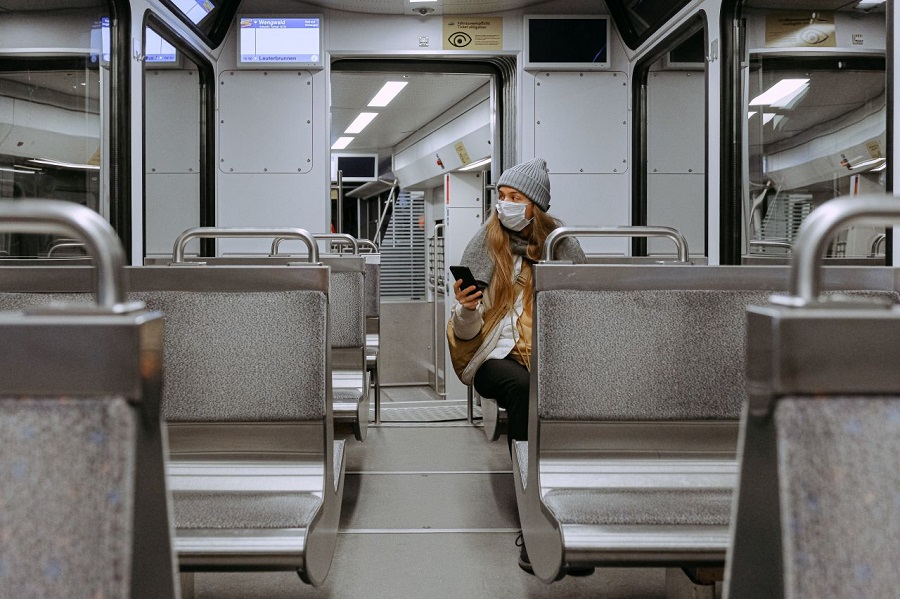“New Normal” Public Transportation Practices to Apply

The current global health crisis has taken over the world. Governments across the globe have implemented lockdown measures, international travel restrictions and stay-at-home orders to curb the transmission of the coronavirus.
A few months later, some countries that have successfully flattened the curve are gradually easing lockdown restrictions to revitalize struggling economies. This does not mean that the virus has disappeared, though. It’s still present and will continue to pose a risk for months (or even years) to come.
Individuals who need to leave their homes to buy essential goods or commute to their workplace will need to stay safe during this “new normal.” This is especially true for people taking public transportation on their way to their destination. If you’re one of these people, keep these public transit practices in mind:
Wear a Face Mask Properly
A face mask is mandatory in many public transportation facilities. SMRT, for instance, requires everyone (except for kids under the age of two) to wear a mask when using their transportation network. Keeping your mask on at all times is an effective way to protect yourself and others from the virus.
When putting on your mask, make sure it completely covers both your mouth and nose. Wearing the mask properly enables you to block droplets from your coughs and sneezes. It also reduces the likelihood for you to touch your face and transmit the virus to others.
Sanitize Your Hands

Many public transportation networks, including SMRT, provide hand sanitizers to the riding public. When you’re taking the bus, train or other modes of transportation, use these sanitizers as much as possible. This is important, especially if you used your hands to hold on to commonly touched surfaces.
Remember to sanitize both your hands before and after the ride. If possible, go to a public restroom after the trip and thoroughly wash your hands with soap and water for a minimum of 20 seconds. Also, refrain from touching your face while riding the public transit — even if your hands appear clean.
Keep Your Distance
Practicing social distancing is vital to limiting the transmission of the virus. When you’re taking public transit, avoid contact with sick individuals and maintain a distance of at least 6 feet from others.
Keeping your distance does go against human nature (people are social beings, after all). During these times of uncertainty, however, you need to minimize interactions with others in public and high-trafficked spaces. Having a chat with a friend or a family member on your commute is possible, but you should still keep a healthy distance. Better yet, use your mobile phone and bring your discussion online.
Refrain from Wearing Gloves
Commuters who put on gloves may assume that the virus won’t make it to their hands or their body. This seemingly logical precaution, however, may give individuals a false sense of security. You’re likely to touch everything you please, including your face. This results in self-contamination.
What’s more, wearing the same set of gloves during your daily commute is a big no-no. You’re likely to transmit viruses everywhere you go. You’ll be spreading these organisms from your glove to every door, grab handle or seat you touch on the train or bus.
The bottom line is that gloves won’t offer more protection against the virus. You’re better off using alcohol-based sanitizer and washing your hands frequently.
Take Your Trips during Off-Peak Hours
As much as possible, refrain from using public transportation systems during rush hours. Maintaining sufficient physical distancing with passengers during these periods will be difficult, if not possible, to do.
If you’re going to do grocery shopping, for instance, leave your home during less busy times. An example is taking the bus or train during lunch break, a time when most are eating instead of commuting.
Also, see if you could have your work hours adjusted. This is applicable if you’re required to commute on your job. Also, allocate additional time if you need to wait for a less crowded bus or train.
Pay for Your Trip Using Contactless Methods
If possible, refrain from buying public transit tickets using cash. Opt for alternative payment methods, such as purchasing tickets by scanning a QR code, using a mobile app or getting them online in advance. If you’re using a tap card to enter and exit a train station, consider sanitizing it before you put it back on your purse or wallet.
Remember these public transportation practices before you leave the house. Although some may find these precautionary measures to be inconvenient, they can go a long way in keeping you and the people around you safe.